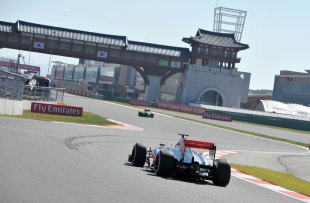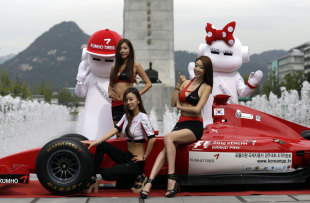

Despite a plethora of bad press in the country's major newspapers when it emerged that the Korean Grand Prix organisers were in something of a compensation fight with FOM, it has emerged that the Korean race team are hoping to put their event back on the calendar - and on the track - in 2016.
I may have loathed the race with a passion, but any pragmatic observer can see the arguments for a Korean race: the country has a middle-class with a high disposable income and an interest in technology. The automotive industry is a cornerstone of the national economy, and the Asian nation is gadget-happy, connected, and increasingly interested in sports once perceived as Western. Numerous Korean brands would make logical sponsors, and opportunities abound for technical partnerships.
Korea remains an ideal target market for Formula One. We may have failed to make the most of Mokpo, but our brief sojourn in the country did in fact plant the seeds for a nascent racing community.
When news first emerged of a potential lawsuit between FOM and the Korean Grand Prix organisers, the New York Times ran an in-depth piece entitled 'A Korean Auto-Racing Debacle, but Hope Around the Bend'. While the article covered the shambles that was our attempt to bring racing to a port town in the middle of nowhere, it did also feature a number of heart-warming stories about individual Koreans falling in love with motorsport.
Shim Woo-won told the New York Times: "Ten years ago, when I first took to car racing, there was no track, and people like me contented ourselves with speeding dangerously on twisted country roads. What we see here is the birth of a car-racing culture in South Korea."
French expat Michel Puchercos had a similar take when speaking to the New York Times: "You see the car-racing mind-set suddenly picked up in Korea in the past two years. You see the number of racing cars increasing."
While these personal anecdotes are hardly concrete evidence that South Korea has morphed into a nation of F1-hungry petrol-heads, there are other signs that our brief presence in the country was not entirely wasted: the New York Times reported that since the first Mokpo race in 2010, there has been a 30% annual increase in the number of drivers licensed to run at the Yeongam International Circuit, with 3,000 now qualified to use the track.
Since 2012 there has been a dramatic upswing in the number of clubs and societies for automotive enthusiasts across the country, and the nascent motorsport culture has seen the development of two new tracks near Seoul and street races are being held in satellite cities near the capital.

If Formula One does return to South Korea, we do have a chance to do it properly this time. But the biggest mistake we - and the Korean Grand Prix organisers - made in planning the race was its location.
Negotiations to bring the race back to Mokpo are doomed to failure. Should a deal be hammered out, there is absolutely no reason to expect that a possible 2016 Korean race would see any more attendees than the 2013 edition. The track remains difficult to access with limited accommodation options in the surrounding area. The organisers would see the accumulation of more debt, and more protests from local civic groups opposed to F1 would only increase.
Should a race be held within an hour's reach of Seoul, however, the combination of a massive population centre and a local market with an increasing awareness of and interest in motorsport creates the best possible circumstances in which a rebooted Korean Grand Prix can flourish.
It may seem obvious, logical. That's because it is. But how often does Formula One opt for the obvious, logical solution?
